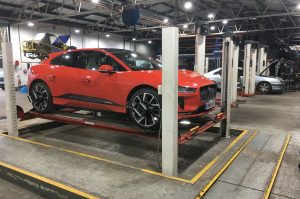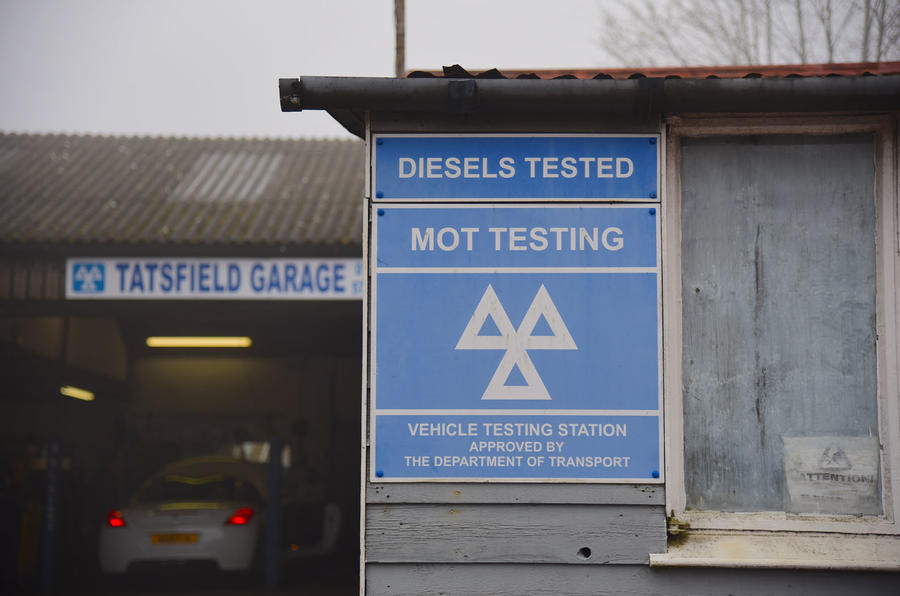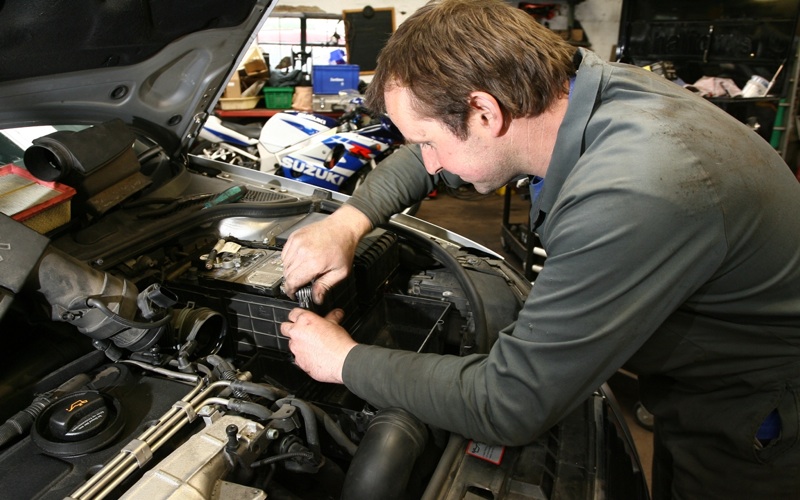By: Rob Marshall, CAT Contributor
Business is booming and EV sales are relatively low, so why bother with high-voltage training now? CAT investigates.
The fast-tracking of the Internal Combustion Engine (ICE) new car ban leads many onlookers to question if the ambition can be achieved by 2030. Many challenges are ahead, including addressing the ethical conundrums of Electric Vehicle (EV) production, China’s dominance in the battery supply chain notwithstanding. As UK politicians polish their halos in readiness for hosting the UN Climate Change Conference in Glasgow next November, has political ambition on transport emissions overtaken technical reality? It happened before, and diesel-gate was the price.

Confusion reigns
EVs are motivated politically, so it is hard not to view the headlines with scepticism. For example, in October 2020, the SMMT highlighted that EV registrations (at the time of writing) increased 184% in 2020, but they also represent less than 7% of the new car market and not even 1% of the number of cars on UK roads.
Business fleets drive forward most new EV demand, and the vast majority of those are not maintained by the aftermarket. Used car values also indicate that private buyers remain unconvinced; CAP HPI reports that EV values were worse than those of non-hybrid petrol and diesels during mid-2020.
Most independent garages see their busy work schedules as an additional comfort blanket. Yet, the current situation is somewhat artificial. The UK’s car parc is older then ever. Covid has also prompted younger people to learn to drive and buy vehicles, which are typically older, rather than risking the public transport petri-dish. Now that garages are clearing the backlog from lockdowns, they should be aware this bubble will burst. Now is the time to prepare not only for the future but also to catch up with the present.
EVs are not the only cars that employ high-voltage drive systems. Electrical assistance is crucial to meet the tough EU CO2 limits of today but the technical solutions differ wildly, perplexing not only salespeople but also many aftermarket professionals.
“It is easy to be confused, and manufacturers are not helping,” says Peter Melville of the Hybrid and Electric Vehicle Repair Alliance (HEVRA), who highlights vast technical differences even within the same category. For example, the Volkswagen Golf GTE, Toyota Prius Plug-in, Vauxhall Ampera, Range Rover P400e and Ford Transit Custom PHEV are all plug-in hybrids but each one joins the engine, motor and wheels in a different way.
Even the government is confused. During November 2020, the Department for International Trade tweeted that the next Nissan Qashqai is an electric car, when it is a hybrid. No wonder that the public is befuddled and resistant to change from conventional ICEs.
Cleevely EV of Cheltenham, Gloucestershire was set-up alongside a traditional independent repair workshop. One of its founders, Matt Cleevely, revealed that the purpose was not to enter new markets but retain current customers. Yet, Matt experienced consumer confusion first-hand.

He explains: “Customers still come to us requesting a hybrid. By taking time to discover what they needed, we found that a pure EV would suit them better. The opposite scenario has also occurred, in which case we advise what type of hybrid is best. This takes time and, of course, knowledge.”
Matt predicts that, as soon as education improves among the motor trade and consumers, ‘pure’ EV sales will increase, as will the number of repair professionals. Training, therefore, is vital to deliver the government’s target and provide further opportunities for non-OEM franchisees.
First steps
While the IMI continues to highlight the shortage of technicians that are schooled in high-voltage technology, ACIS CEO Graham O’Neil reasons that training all personnel, who interact with a high voltage vehicle, such as drivers, tends to be overlooked. After all, customers expect staff on the reception desk to answer questions confidently.
Maria McCullough, Autocare’s Garage Network Manager, highlights the IMI
EV Level One Awareness course, which it runs across the UK, as suitable.
Pro-Moto Europe Ltd’s Technical Trainer, Eliot Smith, comments that drivers of EVs and high-voltage hybrids would also benefit from receiving such education, as part of their employers’ Duty of Care obligations, particularly as the course covers what to do in the event of a mechanical failure, or an accident. For emergency and recovery personnel, Eliot recommends the IMI Level 2 Awareness in Electric/Hybrid Vehicle Hazard Management.
Life savers
High-voltage vehicles pose no immediate risk to an owner/driver, so there is no reason to scare the public. However, the risks rise after the vehicle has been involved in a collision, which is why Graham O’Neill advises strongly that body repair technicians, service centres and mechanical workshops are trained in EV safety awareness and safe shut-down procedures. A voltage of around 50 volts and 0.08 amps can cause cardiac arrest, so exposure to between 100 and 600 volts and up to 150 amps of direct current raises risks significantly.
Maria McCullough adds: “A garage technician would not be allowed to attend an EV/hybrid course without first attending a VEE (Vehicle Electric and Electronics) or advanced electrical course.”
The IMI’s Steve Nash says: “Anyone working on high voltages must be competent as per the Electricity at Work Regulations 1989. Risk starts from the fundamental point
of opening the bonnet and knowing what can be unplugged safely, right the way through to facilitating repairs on the drivetrain.”
Knowledge must be complemented with suitable equipment, especially as the insulation properties of most tools are inadequate. Danger signs, barriers, suitable diagnostic equipment, correctly rated multimeter/voltage probes should be accompanied with gloves,
hand tools and rescue hooks, insulated to a minimum
of 1000 volts.
Training accessibility
Despite EV sales being fairly low, some aftermarket businesses are recognising that high-voltage training is needed for some hybrids, so the demand for training is growing.
O’Neill reports that, despite Covid, ACIS continues to embrace the latest EV advances with Rob Ward, its training partner. Autocare is also increasing its high-voltage courses across 55 venues in the UK, both in number and scope, while Pro-Moto adds that its work within and outside the automotive industry has seen year-on-year demand for high voltage education increase by 20%. For 2021, it is developing new courses on componentry, including a programme covering battery repairs.
Endorsed recently by the Office for Low Emission Vehicles, the IMI’s TechSafe standards focus on EV qualifications, IMI accreditation and a commitment to CPD (Continuing Professional Development).
Steve Nash says: “Those who have a TechSafe accreditation, with a Hybrid and EV Level 2 qualification, possess the skills to ensure that they can work
on these complex automotive technologies safely.”
Even for garages that remain sceptical and/or are too busy to risk losing technician time to training, bite-sized e-modules offer a solution.
Steve Nash noted that March and June 2020 saw a 60% increase in demand for the IMI’s e-learning courses, compared with the same period in 2019, which has given the organisation the confidence to offer more than 45 EV and Light Vehicle training modules online from early this year.











Pls I need Job Auto Electrician i have 2 year experince Dubai